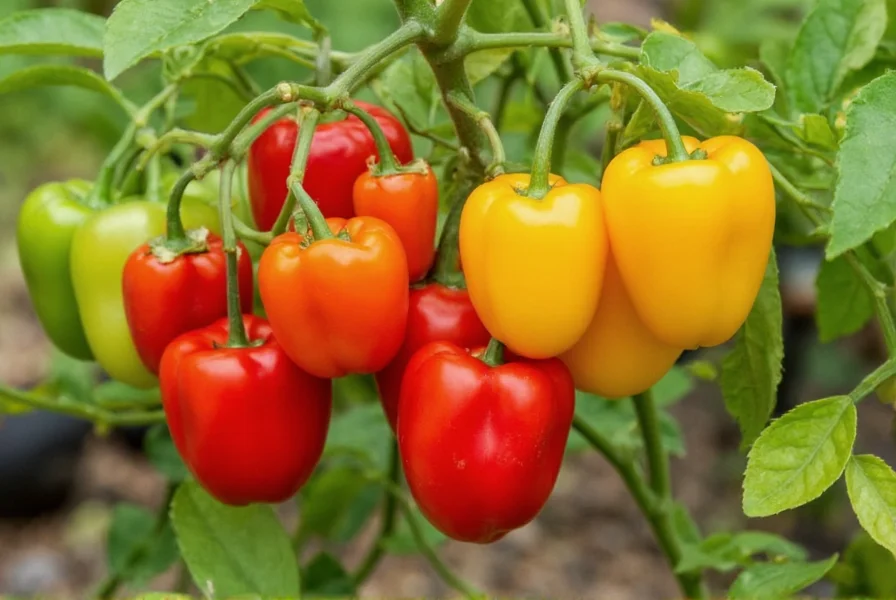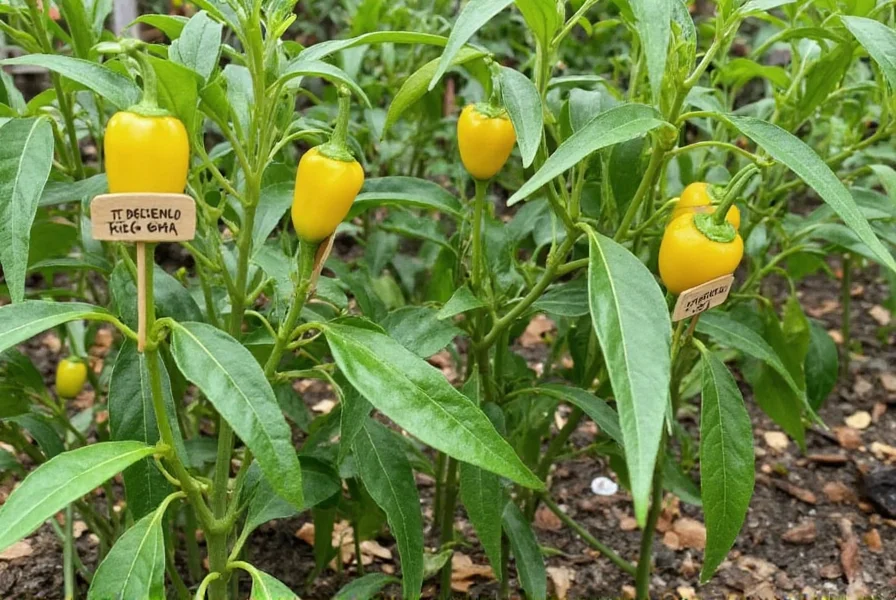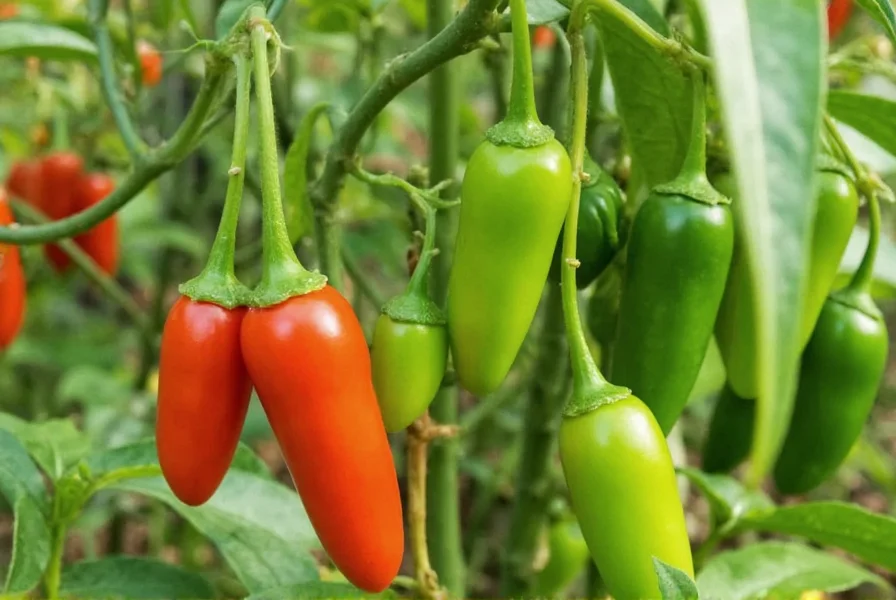Pepper plants (Capsicum spp.) offer remarkable diversity for gardeners and culinary enthusiasts alike. Understanding the different types helps you select varieties that match your gardening conditions and culinary preferences. This comprehensive guide explores the major pepper plant species, their distinctive characteristics, and practical considerations for growing and using these versatile plants.
Understanding Pepper Plant Classification
Pepper plants are scientifically classified within the Solanaceae (nightshade) family. While "pepper" commonly refers to both sweet bell peppers and hot chili peppers, all true peppers belong to the Capsicum genus. Black pepper (Piper nigrum) is botanically unrelated. The heat in chili peppers comes from capsaicinoids, primarily capsaicin, measured on the Scoville scale.
The Five Main Species of Pepper Plants
| Species | Common Varieties | Scoville Range | Distinctive Characteristics |
|---|---|---|---|
| Capsicum annuum | Bell peppers, jalapeños, cayenne, serrano | 0-50,000 SHU | Most widely grown species; diverse forms from sweet to hot |
| Capsicum chinense | Habanero, Scotch bonnet, ghost pepper | 100,000-2,200,000 SHU | Intense heat with fruity flavor notes; slow germination |
| Capsicum frutescens | Tabasco, malagueta | 30,000-50,000 SHU | Intermediate heat; peppers grow upright on the plant |
| Capsicum baccatum | Aji limón, aji amarillo | 30,000-50,000 SHU | Citrusy flavor profile; distinctive cream-colored seeds |
| Capsicum pubescens | Rocoto, manzano | 30,000-100,000 SHU | Hairy leaves; black seeds; tolerates cooler temperatures |
Sweet Pepper Varieties for Gardeners
When exploring different types of bell pepper plants, you'll discover they come in multiple colors beyond the standard green, including red, yellow, orange, purple, and even chocolate brown. Bell peppers (all Capsicum annuum) start green and develop their characteristic colors as they mature. Red bells are simply mature green bells allowed to ripen fully on the plant. Sweet banana peppers and pimentos also belong to this category, offering mild flavor perfect for salads, stuffing, and roasting.

Popular Hot Pepper Varieties and Their Heat Levels
For those interested in hot pepper varieties for gardening, understanding the Scoville scale is essential. Jalapeños (2,500-8,000 SHU) provide moderate heat suitable for beginners, while serranos (10,000-23,000 SHU) deliver more intense spice. Cayenne peppers (30,000-50,000 SHU) work well for drying and powdering. The Capsicum chinense species includes dramatically hotter options like habaneros (100,000-350,000 SHU) with their distinctive fruity flavor, making them popular for hot sauces and Caribbean cuisine.
Extreme Heat Varieties
The current types of chili pepper plants by scoville scale record holders include the Carolina Reaper (1,400,000-2,200,000 SHU), Trinidad Moruga Scorpion (800,000-2,000,000 SHU), and 7 Pot varieties (800,000-1,800,000 SHU). These Capsicum chinense superhots require careful handling and are typically used in minute quantities for extreme hot sauces. Gardeners growing these varieties should wear gloves during harvest and avoid touching their face.
Specialty and Heirloom Varieties
Exploring heirloom pepper plant varieties reveals unique options with rich histories. The Fish Pepper, an African-American heirloom, features striking variegated leaves and was historically used by Chesapeake Bay seafood producers. Shishito peppers (mild Japanese variety) and Aleppo peppers (Syrian favorite) represent global diversity. The Aji Charapita, a tiny Peruvian pepper with intense citrus flavor, commands high prices in gourmet markets. These specialty varieties often offer distinctive flavors beyond simple heat.
Choosing Pepper Plants for Your Needs
Selecting the right pepper plant species classification depends on your purpose. For fresh eating and salads, sweet bell varieties work best. Those interested in hot sauce production might prioritize Capsicum chinense varieties like habaneros for their complex flavor. Container gardeners should consider compact varieties like Thai hot or Cuban Marie. In cooler climates, Capsicum pubescens varieties like rocoto tolerate lower temperatures better than tropical species.
Growing Considerations Across Pepper Types
All pepper plants require warm temperatures (70-85°F), full sun, and well-draining soil. However, growing habanero pepper plants presents unique challenges—they need 90-120 days to maturity and prefer slightly higher humidity than bell peppers. Capsicum pubescens varieties can handle cooler nights better than other species. Most peppers benefit from consistent moisture but dislike wet feet. When planning your garden layout, consider that hot pepper varieties often grow more compactly than sweet bells.

Using Different Pepper Types in Cooking
Understanding sweet vs hot pepper plant species helps maximize culinary potential. Sweet bells work well for stuffed peppers and salads, while jalapeños shine in salsas and poppers. Habaneros add tropical fruit notes to Caribbean dishes, and aji amarillo brings distinctive flavor to Peruvian cuisine. For preserving, consider that thinner-walled hot peppers dry more easily than thick-walled sweet varieties. When substituting one pepper for another in recipes, remember that heat levels can vary dramatically even within the same variety based on growing conditions.











 浙公网安备
33010002000092号
浙公网安备
33010002000092号 浙B2-20120091-4
浙B2-20120091-4